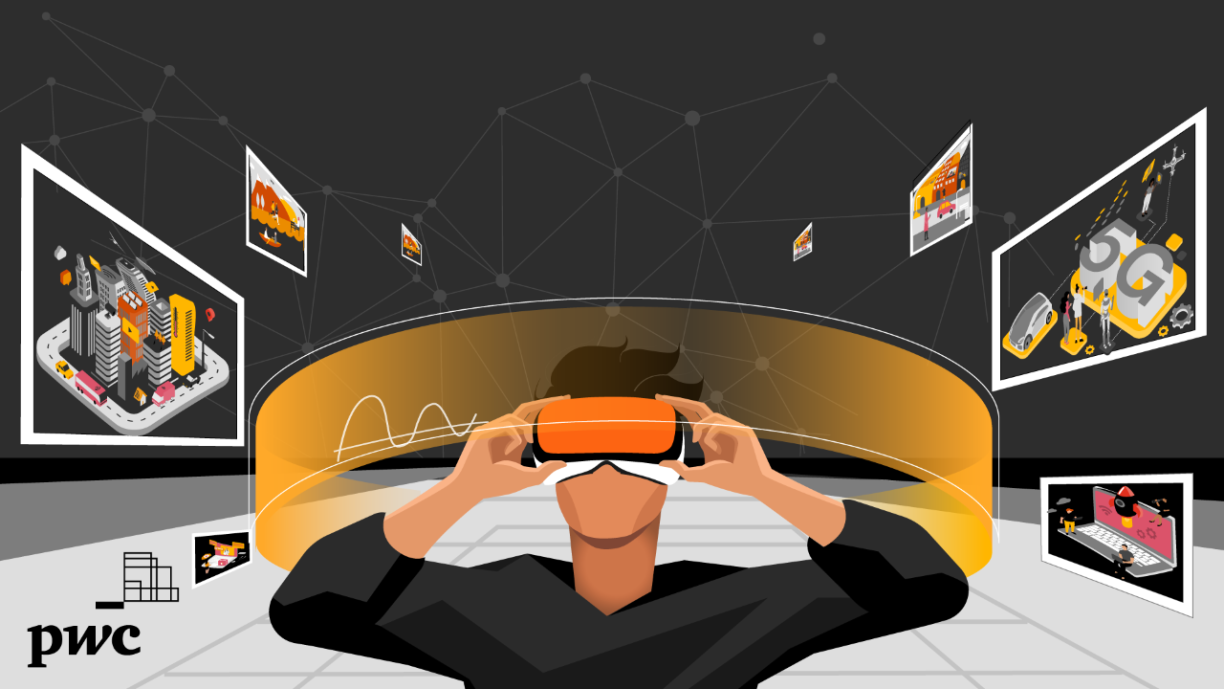
A metaverse is a network of 3D virtual worlds focused on social connection and commercial activities. Its promise is a stunningly realistic 3D digital world where you can (for example) purchase and sell goods and services, sign and enforce contracts, recruit and train talent, and interact with customers and communities. This makes it a brand new marketplace - only virtual. You’ll be able to go shopping, play games, get professional training or socialise with your friends. Even the way we work could fundamentally change with the rise of the metaverse, using virtual reality to attend meetings or just “go” to work by joining the virtual real estate version of your company.
Confused? Don’t worry, a lot of people are. In fact a show of hands at the event on May 11 showed that at least 50% of the attendees had never entered the metaverse, and some people still struggle with blockchain. But….the internet was once new as well. When people realise the potential, and here is why creativity is the key right now to this space because first people need to be attracted to go and stay there, the metaverse is set to be the next stage in the evolution of digital experience- in this case merging the digital and the physical so close together you might not be able to tell where one begins and one ends.
The gamechanger behind the metaverse is the idea that this space does not run primarily on platforms whose owners control data, governance and transactions. It is a shared, decentralised digital environment in which customers and businesses will be able to take their identities, currencies and assets anywhere they wish. “It’s a tangible digital experience,” says Thomas Campione, CFA| Blockchain & crypto-assets Leader, PwC Luxembourg, who hosted the event and is sparking a lot of interest on this topic.
For the metaverse to work, it needs to rely on some key technological elements such as cloud technology, cryptocurrencies, NFTs and other blockchain-based digital currencies or spatial computing to name a few.
What was made clear at the metaverse event is that going forward interoperability will be key to building a true metaverse. However, one of the biggest challenges of its underlying blockchain-based infrastructure is precisely interoperability (i.e. the many different blockchains currently in existence do not speak the same language).
Furthermore, an inherent goal of blockchain is decentralisation and to date, web 2.0 is still largely centralised, hence the emergence of web 3.0 where users own and control their data, identity, digital assets,etc..The metaverse and the web 3.0 are often used interchangeably but actually refer to different concepts.
If this sounds still very vague, try to remember how abstract the idea of social media was to you before the rise of Facebook and all other networks we nowadays use daily for private and professional reasons. The metaverse is not a revolution, it is part of the evolution and convergence of different technologies each having an augmenting effect on each other, and it will certainly profoundly change how businesses and consumers interact with products, services and each other.
This is dependent on a few things. First, creativity. Learning how to use it is key for consumers and likewise for businesses, they need to to learn how to attract people. The success of the metaverse will stand or fall with the user experience and how the environment will be designed, its aesthetics and if it offers something valuable to the user.
Next, the metaverse requires seamless interoperability among users and platforms, based on web 3.0 and still-to-be-determined standards. While this interoperability will offer new possibilities to reach and understand customers, it will also raise new challenges for gathering and protecting data, and for cybersecurity and privacy.
Another challenge is the governance of the metaverse. Being somewhat a mixture of a virtual public space with players and actors from real life, who is responsible for it? It will require rules of engagement for users, rules for how the metaverse itself can evolve over time and enforcement mechanisms, including for tax collection, data governance and regulatory compliance. Early movers may be able to help set these rules. Security will be paramount, as a new, decentralised digital world may offer malicious players a new world of entry points for attack. Authenticity - and trust more broadly - should also be front and centre, to reduce the disinformation that has often plagued the internet.
As Thomas Campione puts it: “Building on the design principles of the web 3.0 and powered by the latest development of spatial computing, gaming engines and human interface, the metaverse is probably the next stage of social or working interactions and economic transactions as we know them today. It also brings the potential for greater inclusion by removing barriers to entry in many sectors, be it education, culture or banking. While the true metaverse is still under construction, many opportunities are already there for market participants and it is crucial for leaders to be conscious of this and to engage into non-regret moves to experiment and gain comfort in the perspective of bolder moves in the very near future.”
Find out more: https://pwc.to/2ReGv8m